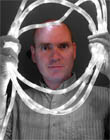|
|
This topic comprises 2 pages: 1 2
|
|
Author
|
Topic: Super 16 not good enough for hi-def?
|
Stephen Furley
Film God

Posts: 3059
From: Coulsdon, Croydon, England
Registered: May 2002
|
 posted 04-28-2007 02:36 PM
posted 04-28-2007 02:36 PM




For many years we have been told that shooting on Super 16 was a good way to protect present day programme making for future high definition broadcasting and distribution.
I recently read a paper which I found on the BBC web site about high definition production formats for programme makers. I can't post a link to the document, because I can't find it again now, but it listed various formats which are acceptable to the BBC for high-definition production; these included 35mm film and various hi-def video formats, some of which I've never even heard of. Why do there have to be so many different video formats? However, one format which was clearly stated to not be acceptable was Super-16, which all those programme makers used for all those years to protect the future of their work in a high-def world, etc., etc.
So, what is the position; are other broadcasters following the same path as the BBC, and rejecting Super-16? Is it good enough for hi-def broadcasting? I've never seen it in high-def, only on standard video and , occasionally, as projected film prints.
| IP: Logged
|
|
|
|
Mark Ogden
Jedi Master Film Handler
Posts: 943
From: Little Falls, N.J.
Registered: Jun 99
|
 posted 04-28-2007 05:30 PM
posted 04-28-2007 05:30 PM




I can't speak for what everyone else is doing, but at the two Viacom networks I'm involved in the rule for material intended for HD playback is: at CBS, 35mm film or 1080/60i or 24p video origination, delivery on Sony HDCAM or Panasonic D5/HD at 1080/60i (except Letterman which sometimes plays-to-air via fiber link from an Avid Nitris). Showtime/The Movie Channel dumped all film a while back, all in house production is 1080/60i or 24p with a 60i delivery. I'm pretty sure that HBO follows the same 35 and/or 1080 guidelines.
The last CBS show that shot S16 was Touched By An Angel, I remember watching the S16 to HD tests and thinking they were pretty weak, especially compared to everything else coming in. I guess the powers-that-be here felt the same way, the network refused to run it in HD until they moved over to 1080/24p origination (it was their last season anyway).
quote: Stephen Furley
Why do there have to be so many different video formats
Strictly speaking, there does not have to be. Just different equipment makers with their own proprietary stuff. It's maddening sometimes, when a piece of video comes in on a format that you don't support and you have no machine to play it back on, you've got to send it out to a transfer house and then have them bump it over. Waste of time. If I ever get handed one of those Panasonic P2 cards, I'm going to have a stroke.
16mm isn't really that hot for standard def, either. Anyone who has access to the complete run of Sex and The City on DVD, compare the first two seasons (16mm) to the rest of the run (35mm). Like night 'n day.
| IP: Logged
|
|
|
|
Bobby Henderson
"Ask me about Trajan."

Posts: 10973
From: Lawton, OK, USA
Registered: Apr 2001
|
 posted 04-29-2007 01:08 AM
posted 04-29-2007 01:08 AM




The thing I find shocking is just how low the movie studios are willing to allow image quality levels to decline all in the vain of chasing that "digital" buzzword.
A couple current examples:
Kickin' It Old Skool opened this weekend. The movie, starring Jamie Kennedy (doing yet another spoof on white guys acting black), looks very obviously sourced from video. The producers put the video through that film step idiocy. All the commercials I've seen for it have a sick, urine colored cast on it along with the usual lack of dynamic range in the image. Anything from NFL films shot on Super16 looks a damned sight better than this visual garbage.
Diggers is another one of those video-sourced movies going into Landmark movie theaters, appearing on DVD and showing on the HD Net movies channel pretty much all at the same time. I don't know if this movie itself is actually any good. As far as image quality goes, it looks like shit. It's another video to film and back to video again piece of crap.
Are the people who govern the standards on origination bothering to consider what is lost when a movie is shot on video, optically transferred to a strip of film and then converted back into video again?
Some video sourced movies, like Sin City for instance, look quite a bit more convincing in their attempts to mimic the film look. The finishing processes they're using are digital based and probably require more time and money to render than just using the stupidly crude method of dubbing the video to a physical film strip.
Honestly, I think if a video-based movie production cannot afford to digitally process the video properly then they should just have the balls to leave the video looking like video. The end result will actually look a lot better -especially in those 2K digital cinema equipped theaters.
| IP: Logged
|
|
Greg Anderson
Jedi Master Film Handler

Posts: 766
From: Ogden Valley, Utah
Registered: Nov 1999
|
 posted 04-29-2007 09:53 AM
posted 04-29-2007 09:53 AM





For the record, the program Touched by an Angel used four shooting formats through its run. They started in regular 16mm. Then, in the middle of the 3rd season (starting in January 1997) they switched to Super 16. (So... the crew had to suddenly protect the 16:9 frame, although nobody off the set ever saw the extra material!) Then, in the fall of 1999, they switched to Super 35 and they were the first CBS series to kick off that season in HD. They did 3 seasons shooting super 35 and CBS showed those in HD. Then, for the final season, in the fall of 2002, they switched to 24P-HD origination with the Sony F900 camera.
...And it took a long time for anyone on the crew to get used to video production. The DP was frustrated beyond measure. The make-up department actually resorted to air-brushing the faces of the cast. It was not a seamless transition on the set. There was a guy on-set at all times from Plus 8 Video (now known as Plus 8 Digital) who was the only guy to truly understand all-things-digital. Whenever there was a malfunction, it was all on his shoulders and none of the regular camera crew could help... while the DP who refused to learn anything about video would curse the whole situation.
Anyway... about 10 days ago I saw the big debut of the "Red Camera" at NAB in Las Vegas. Anyone interested in this little beast? The "test footage" they were showing (with a Sony 4K projector) was a World War I mini-epic written and directed by Peter Jackson. It was 12 minutes long and, as usual with Mr. Jackson, he could have told the story in half that time. But it wasn't about the story, I guess. It was just about seeing that this goofy camera really can "deliver the goods" in 4K film-like video. The turn-around time on the entire project was less than 2 weeks.
The Red company seems to be very interested in feature film work but, by presenting stuff at NAB, they're obviously trying to break into episodic TV work and even flirt with independent video guys. (I wouldn't be surprised if guys who do wedding videos will seriously consider the investment... until they realize that the base price doesn't include nearly enough attachments.) So... they're tweaking the noses of the more-established camera companies. They're also trying really hard to make this look like a movie camera instead of a video camera. So... maybe people who insist on using film will be attracted by this camera's functionality and the company's different attitude when it comes to pushing their products on film people. We'll see.
| IP: Logged
|
|
|
|
|
|
|
|
|
|
|
|
|
|
|
|
|
|
|
|
|
|
All times are Central (GMT -6:00)
|
This topic comprises 2 pages: 1 2
|
Powered by Infopop Corporation
UBB.classicTM
6.3.1.2
The Film-Tech Forums are designed for various members related to the cinema industry to express their opinions, viewpoints and testimonials on various products, services and events based upon speculation, personal knowledge and factual information through use, therefore all views represented here allow no liability upon the publishers of this web site and the owners of said views assume no liability for any ill will resulting from these postings. The posts made here are for educational as well as entertainment purposes and as such anyone viewing this portion of the website must accept these views as statements of the author of that opinion
and agrees to release the authors from any and all liability.
|

 Home
Home
 Products
Products
 Store
Store
 Forum
Forum
 Warehouse
Warehouse
 Contact Us
Contact Us




 Printer-friendly view of this topic
Printer-friendly view of this topic














![[Big Grin]](biggrin.gif)



